#pathfinder party
Explore tagged Tumblr posts
Text

A scene one of our recent sessions ended on. I intended to have this picture much more... finished, but at the same time when the next session came, I lost all drive to continue. What was the point of finishing the illustration depicting current events, when they were no longer current events?
#artists on tumblr#pathfinder character#gnome#pathfinder#ttrpg character#digital art#ttrpg#pathfinder art#oc#original character#ttrpg illustration#ttrpg art#pathfinder gnome#ttrpg party#pathfinder party#rpg party#adventuring party#rpg illustration#rpg art#rpg character#dnd art#dnd#dnd character#digital sketch#digital illustration#digital painting#kobold#sorcerer#ganzi#tiefling
25 notes
·
View notes
Text
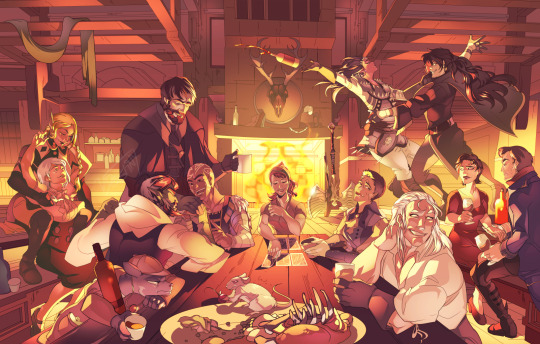

Fitting that at the end of our DnD/TTRPG sale we have here a tavern scene I drew for InterrogatingC for them and their Pathfinder Party (with two close-ups).
Thank you for commissioning me!
Commission Prices/Info Here
#destinymade#artists on tumblr#artistsontumblr#dnd#dnd oc#dnd art#pathfinder#pathfinder fanart#pathfinder party#dndfanart#dnd fanart#dungeons and dragons#digital art
29 notes
·
View notes
Text

Something I made for a Pathfinder game I was a part of
12 notes
·
View notes
Text


Adventure start vs now
#little princess dyed her hair and discovered fashion and firearms#grandma got back together with her ex wife#aadrien is no longer hiding the ancient dragon in their backpack from the party#lizard girl got taller#cold zagreus got sadder#and we picked up two new dykes#ttrpg art#pf2e#pathfinder 2e#digital art
303 notes
·
View notes
Text

What is MapMe? The Portable Map-Making Tool for Your iPad
Want to make maps on your iPad? Today I want to share a new a tool that makes it easy: MapMe!
→ You can check it out here!
Tell me, what other map-making tools should I check out?
#ttrpg#tabletop#dungeons and dragons#dnd#dungeons & dragons#d&d#d&d5e#pathfinder#gurps#rpg#top-down#battle map#map#cartography#encounter#geomorph#dungeondraft#recommendation#third party#tool
226 notes
·
View notes
Text
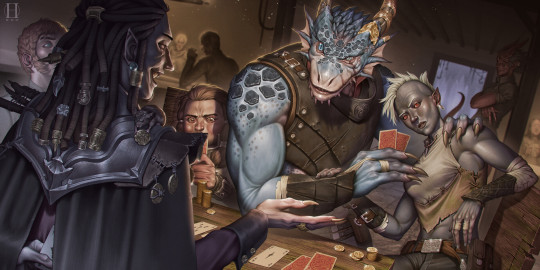
Dm Tip: Playing the Villain/ Guidelines for "Evil" Campaigns
I've never liked the idea of running an evil game, despite how often I've had people in my inbox asking how I'd go about it. I'm all about that zero-to-hero heroic fantasy not only because I'm a goodie twoshoes IRL but because the narrative-gameplay premise that d&d is built around falls apart if the party is a bunch of killhappy murder hobos. Not only would I get bored narrating such a game and indulging the sort of players who demands the freedom to kill and torture at will (I've had those before and they don't get invited back to my table), but the whole conceit of a party falls through when the obviously villainous player characters face their first real decision point and attempt to kill eachother because cooperation is a thing that goodguys do.
Then I realized I was going about it all wrong.
The problem was I had started out playing d&d with assholes, those "murder and torture" clowns who wanted to play grand-theft-auto in the worlds I'd created and ignore the story in favour of seeing how much unchallenged chaos they could create. They set my expectations for what an evil campaign was, and I spent the rest of my time developing as a dungeonmaster thinking " I Don't want any part of that"
But what would an evil campaign look like for my playgroup of emotionally healthy friends who understand character nuance? What would I need to change about the fundamental conceit of d&d adventures to refocus the game on the badguys while still following a similar enough narrative-gameplay premise to a hero game? How do we make that sort of game relatable? What sort of power/play fantasy can we indulge in without going off the deepend?
TLDR: In an evil campaign your players aren't playing the villains, they're the MINIONS, they're mooks, henchmen, goons, lackeys. They're the disposable underlings of uncaring overseers who have nothing but ill intent towards them and the world at large.
Where as in a hero game the party is given the freedom to challenge and overthrow corrupt systems, in an evil game the party is suck as part of that corrupt system, forced to bend and compromise and sacrifice in order to survive. The fantasy is one of escaping that corrupt system, of biding your time just long enough to find an opening, find the right leverage, then tossing a molitov behind you on the way out.
Fundamentally it's the fantasy of escaping a shitty job by bringing the whole company down and punching your asshole boss in the face for good measure.
Below the cut I'm going to get into more nuance about how to build these kinds of narratives, also feel free to check out my evil party tag for campaigns and adventures that fit with the theme.
Designing a campaign made to be played from the perspective of the badguys requires you to take a different angle on quest and narrative design. It’s not so simple as swapping out the traditionally good team for the traditionally bad team and vis versa, having your party cut through a dungeon filled with against angel worshiping holyfolk in place of demon worshipping cultists etc.
Instead, the primary villain of the first arc of the campaign should be your party’s boss. Not their direct overseer mind you, more CEO compared to the middle managers your party will be dealing with for the first leg of their journey. We should know a bit about that boss villain’s goals and a few hints at their motivation, enough for the party to understand that their actions are directly contributing to that inevitable doom.
“Gee, everyone knows lord Heldred swore revenge after being banished from the king’s council for dabbling in dark magic. I don’t know WHY he has us searching for these buried ancient tablets, but I bet it’s not good”
Next, you need a manager, someone who’s a part of the evil organization that the party directly interfaces with. The manager should have something over the party, whether it be threats of force, blackmail, economic dependency… anything that keeps the antiheroes on the manager’s leash. Whether you make your manager an obvious asshole or manipulative charmer, its important to maintain this power imbalance: The party arn’t going to be rewarded when the boss-villain’s plan goes off, the manager is, but the manager’s usefulness to the boss-villain is contingent on the work they’re getting the party to do. This tension puts us on a collison course to our first big narrative beat: do the party get tired of the manager’s abuse and run away? Do they kill the manager and get the attention of the upper ranks of the villainous organization? Do they work really hard at their jobs despite the obvious warning signs and outlive their usefulness? Do they upstage their manager and end up getting promoted, becoming rivals for the boss-villain’s favor?
Building this tension up and then seeing how it breaks makes for a great first arc, as it lets your party determine among themselves when enough is enough, and set their goals for what bettering the situation looks like.
As for designing those adventures, you’ll doubtlessly realize that since the party arn’t playing heroes you’ll need to change how the setup, conflict, and payoff work. They’re still protagonists, we want them to succeed after all, but we want to hammer home that they’re doing bad things without expecting them to jump directly to warcrimes.
Up to no good: The basic building block of any evil campaign, our party need to do something skullduggerous without alerting the authorities. This of course is going to be easier said than done, especially when the task spins out of control or proves far more daunting than first expected. The best the party can hope for is to make a distraction and then escape in the chaos, but it will very likely end with them being pursued in some manner (bounties, hunters, vengeful npcs and the like). Use this setup early in a campaign so you have an external force gunning for your party during the remainder of their adventures.
Dog eat dog: It’s sort of cheating to excuse your party’s villainous actions by having them go up against another villain who happens to be worse than they are. The trick is that we’re not going after this secondary group of outlaws because they’re bad, we’re doing it because they’ve either got something the boss wants, or they’re edging in on the boss’s turf. This sort of plotline sees the party disrupting or taking advantage of a rival’s operation, then taking over that operation and risking becoming just as villainous as that rival happened to be. This can also be combined with an “Up to no good” plot where both groups of miscreants need to step carefully without alerting an outside threat.
The lesser evil: This kind of plot sees your party sent out to deal with an antagonistic force that’s a threat not only to the boss’s plans but to everyone in general. In doing so they might end up fighting alongside some heroes, or accidentally doing good in the long run. This not only gives your party a taste of heroism, but gives them something in their back pocket that could be used to challenge the boss-villain in the future.
The double cross: In order to get what they want, the party need to “play along” with a traditional heroic narrative long enough to get their goal and then ditch. You have them play along specifically so they can get a taste of what life would be like if they weren't bastards, as well as to make friends with the NPCs inevitably going to betray. This is to make it hurt when you have the manager yank the leash and force the party to decide between finishing the job , or risk striking out on their own and playing hero in the short term while having just made a long term enemy. This is sort of plot is best used an adventure or two into the campaign, as the party will have already committed some villainous deeds that one good act can’t blot out.
Next, lets talk about the sort of scenarios you should be looking to avoid when writing an evil campaign:
Around the time I started playing d&d there was this trend of obtusely binary morality systems in videogames which claimed to offer choice but really only existed to let the player chose between the power fantasy of being traditionally virtuous or the power fantasy of being an edgy rebel. Early examples included:
Do you want to steal food from disaster victims? in Infamous
Do you as a space cop assault a reporter who’s being kind of annoying to you? in Mass Effect
Do you blow up an entire town of innocent people for the lols? in Fallout (no seriously check out hbomberguy’s teardowm on fallout 3’s morality system and how critics at the time ate it up)
I think these games, along with the generational backwash of 90s “edge” and 00s “grit” coloured a lot of people's expectations ( including mine) about what a "villain as protagonist" sort of narrative might look like. They're childish exaggerations, devoid of substance, made even worse by how blithely their narratives treat them.
Burn down an inn full of people is not a good quest objective for an evil party, because it forces the characters to reach cartoonish levels of villainy which dissociates them from their players. Force all the villagers into the inn so we can lock them inside and do our job uninterrupted lets the party be bad, but in a way that the players can see the reason behind it and stay synced up with their characters. The latter option also provides a great setup for when the party's actually monstrous overseer sets the inn on fire to get rid of any witnesses after the job is done. Now the party (and their players) are faced with a moral quandary, will they let themselves be accessories to a massacre or risk incurring their manager's wrath? Rather than jumping face first into cackling cruelty, these sorts of quandaries have them dance along the knife's edge between grim practicality and dangerous uncertainly; It brings the player and character closer together.
Finally, lets talk about ending the villain arc:
I don't think you can play a whole evil campaign. Both because the escalation required is narratively unsustainable, but also because the most interesting aspect of playing badguys is the breaking point. Just like heroes inevitably having doubts about whether or not they're doing the right thing, there's only so long that a group of antiheroes can go along KNOWING they're doing the wrong thing before they put their feet down and say "I'm out". I think you plan a evil campaign up until a specific "there's no coming back from this" storybeat, IE letting the Inn burn... whether or not the party allows it to happen, it's the lowest point the narrative will allow them to reach before they either fight back or allow themselves to be subsumed. If they rebel, you play out the rest of the arc dismantling the machine they helped to build, taking joy in its righteous destruction. If they keep going along, show them what they get for being cogs: inevitably betrayed, sacrificed, or used as canon fodder when the real heroes step in to do their jobs for them.
Art
#dm tip#dm tips#writing advice#evil party#drafting the adventure#dnd#d&d#dungeons and dragons#blades in the dark#ttprg#pathfinder
456 notes
·
View notes
Text

Raine in Monster Hunter Wilds, obsessed with him.
#that’s my blorbo I love him#Raine#monster hunter#S/O to my pathfinder party who are carrying me through this game yall are so sexy for that#🙏
56 notes
·
View notes
Text

Some pre-campaign glimpses of Cassandra - VERY different than her current self.
Some little facts:
She was a Cleric of Pharasma, which was part of the family business.
Her fighting style was much more fluid and her body was more lithe than muscular since she didn't rely solely on strength. Campaign Cass is much more "hit it as hard as I can until it can't move", pre-campaign is more strategic.
Pictured is her ex-girlfriend - one of the people that directly lead Cass to her death (not that she remembers that right now)
The red cord around her arm is a family symbol, gifted to her by her father. The color of the cord mimics the red sand in Pharasma's hourglass and tying it around the arm is to symbolize the dedication of the individual's service to the Lady of Graves.
All in all, Cassandra was a gentle giant butch who was unfortunately too competent, ended up getting killed, and came back wrong.
#dnd#pathfinder 2e#my art#my oc#Cassandra Pathfinder#Doodles help me brainstorm a bit better than writing#Hopefully party members that see this will forget it by the time my backstory becomes relevant lol
42 notes
·
View notes
Text
You sell items to adventurers for a living. It's relatively easy to get business in a frontier city like the one you live in. You were planning on becoming an adventurer yourself but an injured leg when you were young prevented that. But because you already know how to find items, and how they should be fairly priced, so it's a good living.
Not everyone who thinks of themselves as adventurers actually are adventurers. You sometimes have to sell weapons to naive groups of kids, who have no idea what they're doing. Useally you humor them, they tend to go off into useless places with no gold to be found, an old mineshaft that's been explored a thousand times over has become famous for such things. If they seem like they'll go somewhere way more dangerous than they should, you point them to the mineshaft.
Of course, most of your business is from actual adventurers. They tend to be wanderers, foreigners, a lot of ex merchants or ex millitary, or children of nobility who cant inherent, the type of people who never had the chance to make a safe living. Most of them are nice to you, and if they're not you know how to get them to leave.
You also know how to become a protecter for the adventuring parties who need it. Your shop is basically the center of their community in this part of the city. If a spellcaster is part of an illegal religion, or performing banned practices, you know what symbols to sell them to help them hide themselves. If someone is clearly a runaway slave or serf, or from a race that's considered a monster in this part of the world, you know how the forge the right documents. There was a hobgoblin who frequented your shop for a long time, who you sold weapons to, who you had to testify in front of the city sherif was not a hobgoblin but was infact a member of a rare subrace of elf that you made up to protect him. You may have also recently made an entire fictional category of magic legally real for the sake of protecting some necromancers you know.
There are some people you never sell to. It's not considered good principle to sell to people who would gladly kill your other clients. There was a group of warriors weilding holy magic who talked a lot about punishing sinners, they came back with the heads of goblins and hobgoblins a lot, and vampires, and humans of religions other then theirs. After they started bringing in more of their freinds you cut them off.
There are people who you wished you hadn't sold to for other reasons. There was this human noble girl who you sold a suit of armor to, she had run away from an arranged marriage and joined an adventuring party so she could be as far from her parents as possible. She seemed so excited to be in a big city, to be out in the world, she chatted with you for hours about an epic poem from ages long gone that she liked. When she came back to your shop after her first quest she had turned undead, something happened in her first dungeon that changed her, her skin was pale, and her teeth had turned sharp, you just remember her shivering and trying to cry, and muttering about how cold she was. Her other party members said they were happy she was more durable like this, they didn't seem to care about her outside of that.
And of course, there's the fact that every adventurer you know, useally doesn't come back eventually. When a full party goes you can assume they left town, but when just one or two from a party is missing there tends to be one explanation. Most adventurers don't have long careers, and mortality especially high for rookies. But you don't tend to ask if anyone is dead, it's better to just assume they went home, as implausible as it may be.
#196#my thougts#worldbuilding#writing#my worldbuilding#my writing#fantasy#rpg#ttrpg community#ttrpg#goblins#goblin#dnd#pathfinder#adventuring party#vampire#undead#dark fantasy#original fiction#flash fiction#short story#short fiction#high fantasy
216 notes
·
View notes
Text

Yo give them a moment will ya? You’re kinda killing the mood
#ockiss25#my art#pathfinder#xioyun#vio miette#balthazar lucienne#love making Xioyun 3rd wheel things#it’s deep interconnected dynamic and some guy they let hang out sometimes#like when you were only barely invited to a conversation#so you just sit on the side awkwardly listening as people who actually wanted to talk to eachother chat#xioyun can get love when he can build good close bonds to either his party members or the npcs and they stop dunking on him#until then no one wants him fr
28 notes
·
View notes
Text
WIP Wednesday
Tagged by @sylvienerevarine, @sheirukitriesfandom, @theoneandonlysemla, @dirty-bosmer, and @madam-whim, thank you all! I tag you all back for next time as well as @nostalgic-breton-girl, @vervayyn, and @illumiera~
Having Unselm gently tease Isanna is one of the easiest things in the world for me to do, so have a little of that while she’s standing guard over him while her teammates clear the way for him:
“If anything happens,” she said, watching him carefully, “I need you to get behind me.” His mouth twitched into a smile as he looked back at her, and he said, “I have my bombs, you know.” His smile faltered as she continued to stare, and he heaved a sigh and added, “They won’t help me if I have a seizure. You’re right.” “I won’t risk your life, Unselm,” she said, her voice soft and serious. “I promised Lady Heidmarch to see you back safely. If that means shielding you with my own body, then so be it.” He regarded her for a moment, then smiled again. “It would seem you chose the right profession,” he remarked. “You’d be the most intense cleric I’ve ever met, otherwise.” It was her mouth’s turn to twitch upward into a wry smile, though she couldn’t fault him for the assessment. “I asked my first mentors far too many questions about when it’s appropriate to smite people to be a cleric,” she admitted. “That in addition to what you’ve already experienced of my… interpersonal manner. I’m too analytical to help people in a more traditional way, but I can still protect them from evil.” “With a little adventuring on the side,” he said, gesturing at the broken doors leading into the Crow. “Who knows what evil might be lurking in these ancient places,” she returned gravely. “We already know the shards are cursed.” “Exactly as I said,” he said with a smile and a twinkle in his eyes. “Very intense.”
#pathfinder#unselm oldurac#shattered star campaign#my writing#my oc#isanna#text post#for a little context we took him to a cool place we'd already cleared but oops more hostiles moved in in the mean time#in another universe they would make such a cute couple but alas it's not meant to be in this one#that's what ani is for : )#...ani is actually for adding long range and primary caster capabilities to the party but romancing unselm is also of extreme importance
23 notes
·
View notes
Photo

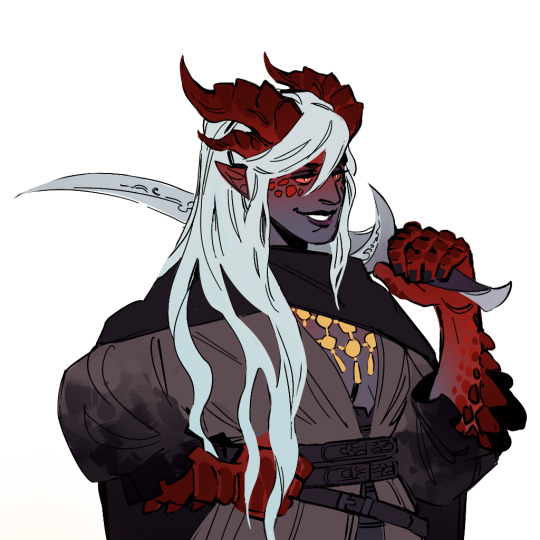
redesigned cereza again for a pf2e game
#dnd#d&d#dungeons and dragons#pf2e#pathfinder 2e#crashing my friends' age of ashes game#she introduced herself to the party by breaking in to their house <3
2K notes
·
View notes
Text

𝐂𝐡𝐞𝐞𝐫𝐬! 🍻💀🍻
#dungeons & dragons#dungeons & dragons 5e#dungeons and dragons#dungeons and dragons 5e#pathfinder#pathfinder 2e#pf2e#d&d#d&d 5e#dnd#dnd 5e#ttrpg#tabletop roleplaying games#tabletop roleplaying#lizardfolk#the boys#party#drinking#funny#lol#comedy#meme#memes#d&d meme#d&d memes#dnd meme#dnd memes#pathfinder meme#pathfinder memes#pathfinder 2e meme
50 notes
·
View notes
Text
Another Inktober piece 😃
11 - Snack(s)
Kenabres, 4175 AR. Approximately one day before cultists attack the Defender's Heart.
(Best to click for better image quality, tumblr’s mangling the preview)
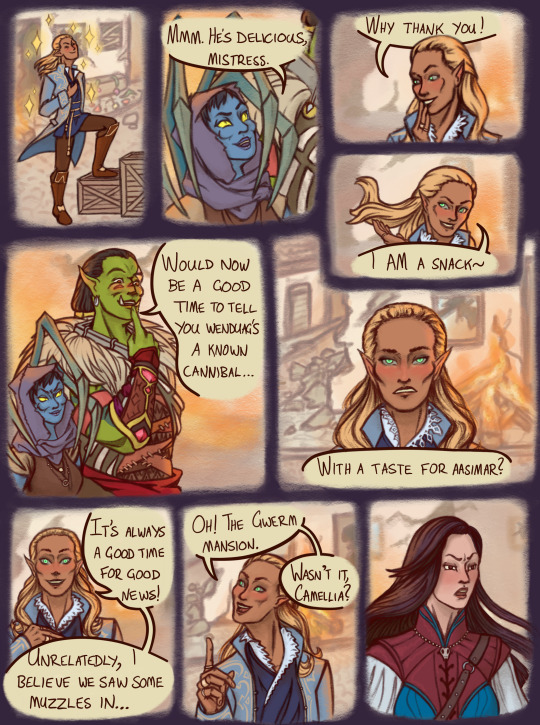
My KC, Dornik, distinctly remembers waking up in agony a few days ago and hearing Some Fucking Blond telling everyone to throw their mortally wounded body in an accommodating ditch, so now they're choosing violence~
Might be easier to read the panels individually on mobile, so I've included them along with some ramblings about characters and designs under the cut 😊.
Panels!

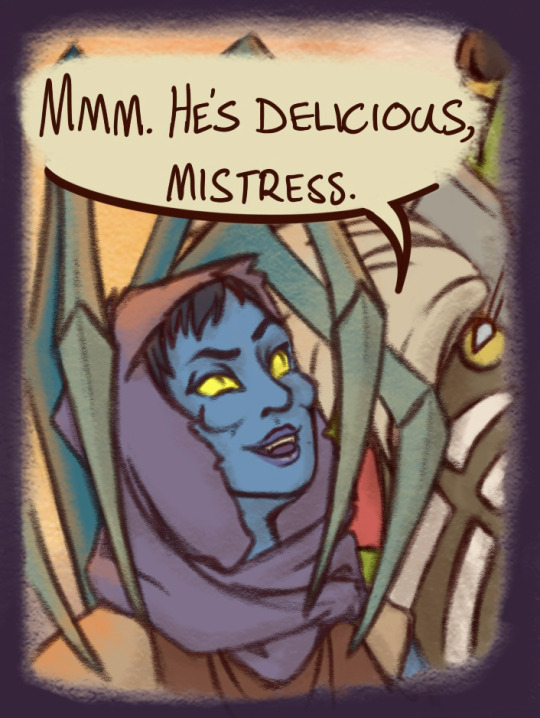
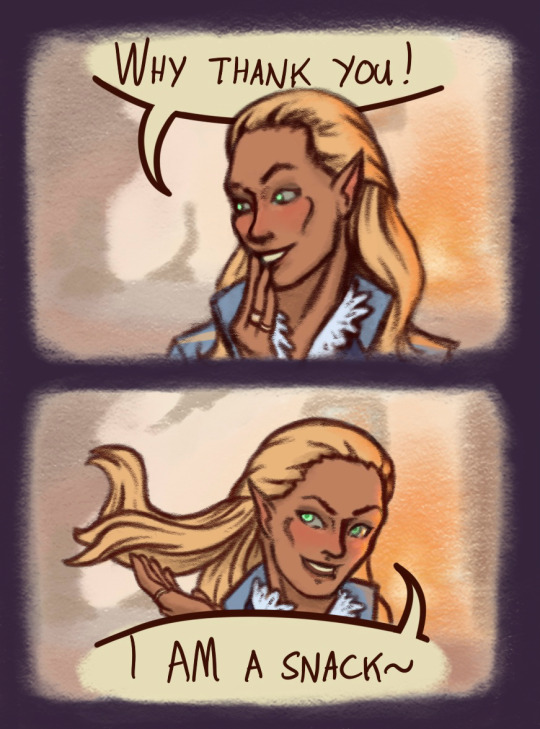

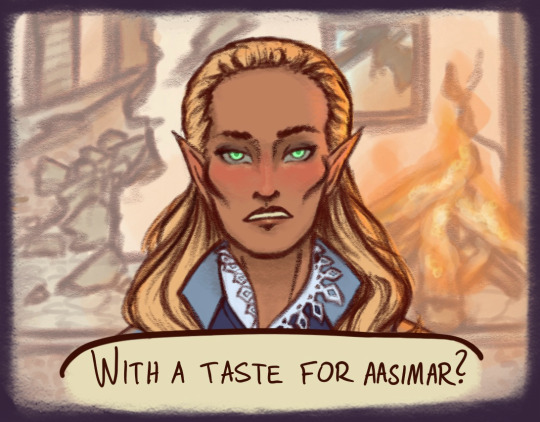


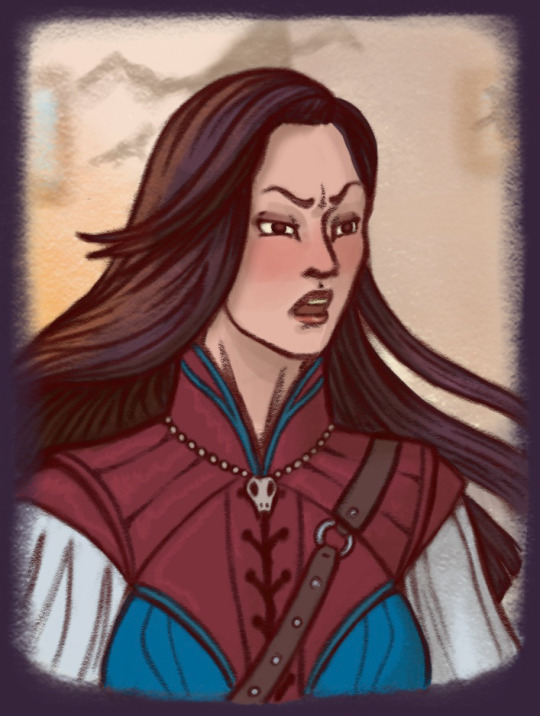
I love writing and drawing these characters so much aaaa, they're all DISASTERS and their designs are so fun. Everything about Wenduag's design is just chef's kiss I've never not had fun making art of her! Those eyes! Those adorable cheeks! Those damn spider leggies! She's so expressive and awful I love herrrrr.
Dornik and Daeran are both great for challenging myself. I'm not imagining Wenduag is tiny, Dornik's just a pretty strong orc who's nearly 7ft tall, and learning to capture that built-like-a-mountain vibe is so rewarding. (Because orc. More orc so good yesssss.) This picture is taken seconds before disaster (Dornik in all their 8 wis glory has yet to twig that Wenduag might take their hilarious joke as an endorsement) because what are beloved OCs for if not taking Ls?
With Daeran, one of my favourite things about his portrait is how vaguely unsettling it is, especially with his eyes, and I really want to capture that when I'm drawing him. His unhinged energy is so important to me 😍, and the idea of that rhythm of high energy-sudden stop (the first mask drops, revealing a second, equally beautifully crafted mask which is also but not entirely more true)-high energy dance is what inspired me to make this in the first place. That, and the escalating-curveballs dynamic you can have between him and your Commander 😍 just an absolute pair of menaces 😍.
And Cami's just always a delight to draw, she's trying hard (well. sometimes) to be so proper but underneath there is everything So Wrong With Her (Cami romancers if you're reading this you're strong and fearless and have all my support). There's such a threatening aura to play with and the contrast between her self and the facade she's trying to maintain is marvelous enrichment for the art brain.
#not pictured seelah (assigned the party braincell): i guess this might as well happen sure#sorry kenabres you wanted heroes you got dysfunctional twentyishsomethings#pf:wotr#pathfinder wrath of the righteous#daeran#daeran arendae#wenduag#camellia#camellia gwerm#pathfinder wrath of the righteous spoilers#pf: wotr spoilers#knight commander#dornik#az art#az oc
41 notes
·
View notes
Text


Dungeon: The Narrow Out
Looking to slip past the imperial naval blockades, you and your fellow strangers have paid for passage aboard a smuggler’s ship. Something's gone wrong however, you were supposed to meet at the mouth of the old sea cave but the person who was to be your guide hasn’t shown. With no hope of turning back, your only chance of escape is to press onwards into the dark.
This adventure starter is intended as an intro for a group of newer players and provides an introduction to a campaign full of mysteries, hidden motives, and nautical swashbuckling. It lets you get a group of unrelated characters together, give them a starting point to begin constructing their backstories (why they need to leave the land under blockade), and familiarize them with the game’s mechanics (whichever that game might be) before sending them out into the world for larger adventures.
Challenges & Complications
After some brief introductions at the mouth of the cave (perhaps asking how everyone is dealing with the chill of the evening, and the stress of trying to slip past the military blockade), you can send the party into the mouth of the cave with the shared understanding that their contact is long overdue. Finding their way through the caves is essential to them obtaining their freedom, but solving the mystery of what happened to their contact will prevent the same from falling into a similar fate.
The initial leg of the journey through the cave is full of darkness, dead ends, and the usual denizens of any low level dungeon. The idea here is to teach your party the basics of game mechanics ( combat, skill challenges etc) before they get into exploration proper. These early tunnels are little more than various natural caves that the smugglers use as a buffer between their hideout and the outside world, sometimes creating false trails that lead would be interlopers into traps.
The interior of the smuggler’s lair is an old fortress built into the walls of the cave itself, a secret dock constructed during the Grey Duke’s Revolution (or whichever conflict fits your campaign backstory) and lost in the subsequent shift of power. Since then it’s become a place for the smugglers to store their ill gotten good while blocking off several sections for being too dangerous to utilize, which just may prove to have unclaimed valuables.
The smuggler’s ship, the Singing Eel is awaiting the party at the dock, all decked out and ready to sail but with no one apparently on board. It’s an eerie sight, made all the eerier by the discovery that several of the innocuous statues stashed away in the cargo hold are in fact former members of the crew, victims of the flock of cockatrices the smugglers were transporting at a noble’s behest who managed to escape their cages and now lurk in the ship.
While the party’s contact is stone dead, the rest of the crew is hold up in one of the old fortifications, ordered to hide by their all too cautious captain who’s scared of the beasts attacking. The cockatrices haven’t left yet because one of their number, the lone rare female is still stuck in her cage, kept alive by the males foraging for her and passing food. The smugglers are on the edge of mutiny, some want to bolt, some want to try and fight, some want to recover their deadly cargo for the rich payout they were promised, and the party can have a strong impact depending on which side they talk up. Alternatively, if enough of the party are proficient in sailing, the thought might occur to them to cut the smugglers out of the deal entirely and take the ship and/or the surviving cockatrices for themselves and risk the blockade.
While they’re exploring the old dock ruins, the party can come across a number of documents which might include maps of the dungeon, clues to hidden treasure, backstory on the cockatrices, blackmail information on the crew, as well as a hint of treasure in the location they’re headed off to.
Art 1
Art 2
#press start#low level#seaside#dungeon#cave#smuggler#sailing#evil party#dnd#dungeons and dragons#d&d#ttprg#pathfinder
155 notes
·
View notes
Text

we've been putting in some extra time in Santa's Workshop to bring all you a holiday treat. here's a little sneak peak of what you can expect tomorrow!
Subscribe now to get it when it drops:
#burnt cook book party#bcbparty#bcbp#actual play podcast#actual play#podcast#pathfinder#burnt cookbook party#holiday episode#Spotify
28 notes
·
View notes